
|
| Nepal's Civil War - Maoist Insurgency |
|
|
|
| People's Liberation Army |
|
|
| Women Now Swelling the Ranks of Maoists |
November 3, 2004 (IPS)
Striking images of young women in fatigues, rifles hoisted on their shoulders and purposefully marching forward, stare back when one clicks on the official website of the Communist Party of Nepal (Maoist).
The Maoists claim that a third of the 'People's Liberation Army' is made up of women.
Within eight years, the Maoist revolution has spread from two districts in Nepal to almost two-thirds of the country. A]nd women cadres are visible everywhere, in almost all of the country's 75 districts, as propaganda activists, agricultural production team members and guerrillas.
Comrade Parvati (an alias), the head of the women's department of the Central Committee, states that women have become battalion vice commanders and political commissars.
The daily round of news briefs of the Maoist insurgency, routinely lists women Maoists raped, abducted, disappeared and killed, largely by the security forces.
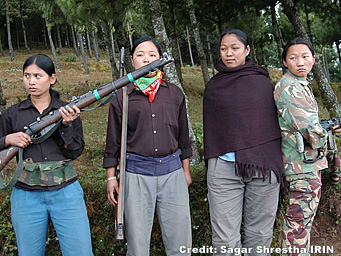 |
|
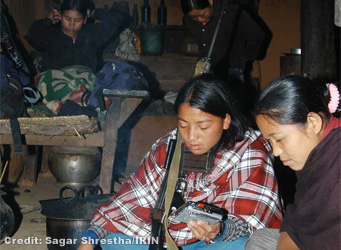 |
|
Clashes between the Maoists and security forces have seen over 10,000 killed.
CPN-Maoists' chairman 'Comrade Prachanda' admitted that the party was overwhelmed by the unexpected response of women to join the armed struggle.
The party propaganda machinery has capitalised on this and frequently eulogises on the exploits of women guerrillas.
Top Maoist women leader Hsila Yami has exalted the emancipatory potential of the movement for women. Before going underground she said: ''The women have more to gain than men from the People's War. That is why the women, especially the Tibeto-Burman and non-Aryan women (from the lower castes) constitute such an important part of the movement.''
Yami is the wife of the second highest raking Maoist in Nepal, Baburam Bhattarai.
''In a woman run subsistence agro-economy, where one in every two households is involved in seasonal migration, women form the majority of the rural community,'' she said.
''With de facto female headed households, there can be no agrarian revolution without mobilising women and putting them in guerrilla fatigues,'' explained Yami.
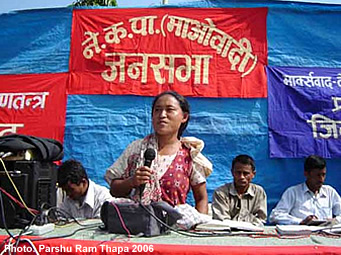 |
|
Insurgency apart, some 5,000 Nepali girls are trafficked annually to India.
In Kathmandu through the Maoists Victims Association, this correspondent met with two girls - 19-year-old Sharmila Gatri and 17-year-old Sangeeta Chettri (not their real names).
They said they had left their villages in eastern Nepal to escape forceful recruitment by the Maoists and were now a working in a Kathmandu bar where sexual exploitation is common.
According to Bishnu Sharma of the daily 'Rajdhani' in Lamjung district - where Maoist recruitments are large -- when the rebels called for one in every family to join, families were more inclined to send daughters than sons.
Nepali writer Manjushree Thapa's encounters with Maoist girls in western Nepal also reinforced this impression.
She recalls her meeting with 'Comrade Binita' who worked in a team of 'political-motivators' in Surkhet district.
''This Maoist woman cadre had three brothers, all of them older than her. She was the only daughter. And she was the only one to leave her studies and join the Maoists,'' she told IPS.
''For many poor, semi-literate girls it seemed the best option available to them to escape a life of drudgery,'' added Thapa.
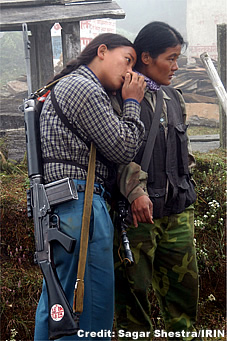 |
|
''Rarely are women's issues taken up as a central theme and the party neglects to implement programmes developed by women's mass fronts,'' she told IPS.
''Women associated with propaganda work and located much closer to the home seem to have less opportunities for transcending gender specific roles than women in the fighting units,'' she added.
Nevertheless, Comrade Parvati acknowledges the difficulty of women emerging as leaders in the on-going 'war'.
''The pressure of marriage and the reproductive cycle obliges them to quit active participation (in the Maoist movement) after 25 years of age,'' she said.
Maoist women, she complained, face internal party pressure to get married. ''The uncertainty of life makes the men insist on early pregnancy.''
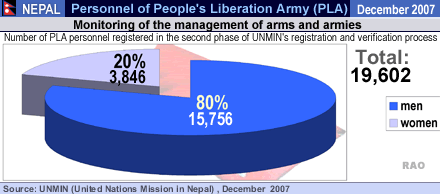 |
|
|
|
|
|

|
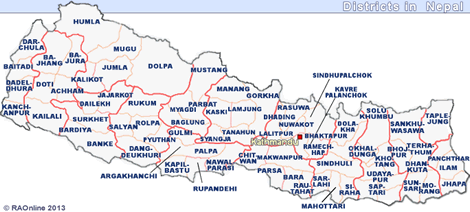
|

